Jessie Misskelley Jr., Jason Baldwin, and Damien Echols were convicted of killing three boys in a cult-like ritual in May 1993 — but then they were later released in 2011.
In May 1993, three young boys in West Memphis, Arkansas were found dead, naked, and hogtied in a ditch. The tragedy sparked an immediate search for their killer — or killers. And it seemed the police had quickly found the culprits: Jessie Misskelley Jr., Jason Baldwin, and Damien Echols, teenagers who would come to be known as the West Memphis Three.
Misskelley and Echols were high school dropouts, and while Baldwin showed more academic promise, he also had a track record for getting into trouble. Echols and Baldwin were friends who knew Misskelley, but before they were accused of murder, they weren’t especially close as a group. Despite this, investigators were quick to blame the trio for the killings.
But what was their alleged motivation? During the trial, prosecutors accused the West Memphis Three of committing the murders as part of a Satanic ritual, even calling on so-called occult experts to “confirm” that the teens worshipped Satan. Misskelley was tried individually, while Echols and Baldwin were tried together, and all three were found guilty.
The story didn’t end there, however. In the aftermath of the trials, more information came to light, and it cast some doubt on the investigation. Police records were “a mess,” jurors were made aware of information they shouldn’t have been privy to by the foreman, and later, DNA evidence failed to link any member of the West Memphis Three to the murders.
In 2011, the West Memphis Three were released from prison. But to this day, people remain divided about whether the former misfit teens were really guilty or not. Numerous books and documentaries have discussed the case, as have some songs, many of which have stood by the innocence of the West Memphis Three. But this all begs the question: If Misskelley, Echols, and Baldwin didn’t commit the murders, then who did?
The Gruesome Murders Of Christopher Byers, Michael Moore, And Stevie Branch
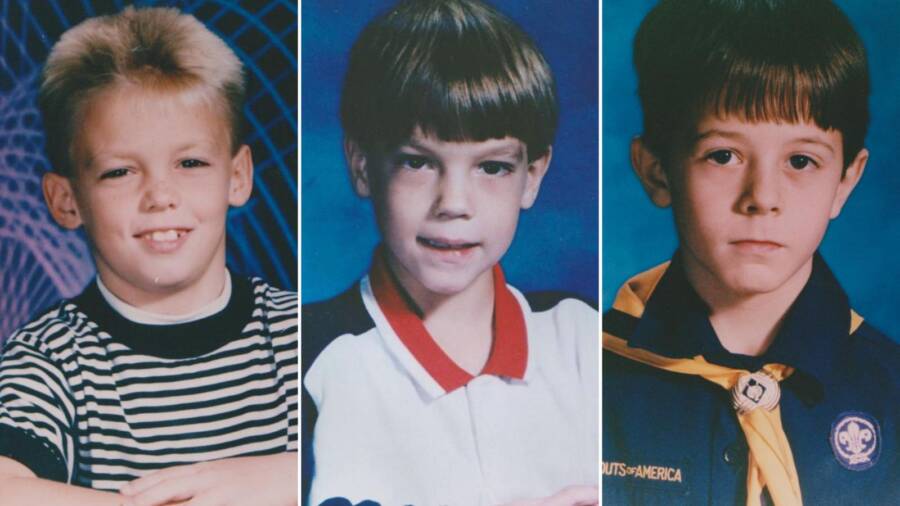
Court DocumentsThe three victims of the 1993 West Memphis child murders: Stevie Branch, Christopher Byers, and Michael Moore.
On May 5, 1993, eight-year-olds Christopher Byers, Michael Moore, and Stevie Branch went out to play in West Memphis and never returned home. Their families quickly reported the boys as missing, and a search party was sent out to look for them. Just a day later, a grisly discovery was made.
In a wooded area known as Robin Hood Hills, the boys’ bodies were found in a drainage ditch — and the scene was as shocking as it was macabre.
The boys were found naked, their clothing scattered about the area. They had all been hogtied with their own shoelaces. Michael Moore and Stevie Branch had both suffered multiple cuts and bruises. Christopher Byers’ injuries were even worse, including mutilations of his genital area.
It was determined that Michael and Stevie died from “multiple injuries with drowning,” while Christopher died due to “multiple injuries.”
But the bizarre nature of the killings raised many questions. Had they been sexually assaulted before their deaths? Were they killed by someone they knew? Had they been murdered by an opportunistic sexual predator? Or, had they been slaughtered as part of some sadistic ritual?
If there were answers to these questions, they weren’t going to be found at the crime scene. Oddly, there was reportedly little blood, leading to speculation that they had been killed elsewhere, then dumped in the ditch. Some of the victims’ injuries would also eventually be tied to possible postmortem animal activity, and a lack of clear forensic evidence meant it was going to be difficult to identify their killer or killers.
Still, the police quickly identified their suspects: the West Memphis Three.
How The West Memphis Three Became Linked To The Brutal Child Murders
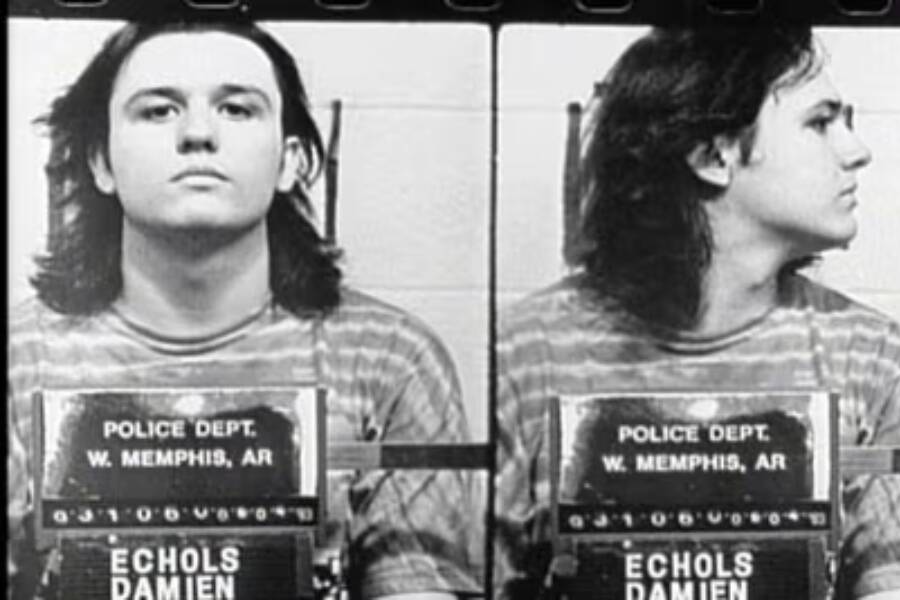
West Memphis Police DepartmentA booking photograph of Damien Echols, one member of the West Memphis Three.
While little hard evidence pointed to Damien Echols, Jason Baldwin, and Jessie Misskelley Jr., there were a number of external factors that caused police to focus their investigation on the teens.
They were all known to be misfits. Baldwin and Echols were good friends who both had previous run-ins with the law, including shoplifting and vandalism. Both Misskelley and Echols had dropped out of high school.
But perhaps the more important determining factor — to investigators, anyway — was the Satanic Panic of the 1980s and 1990s. The West Memphis Three didn’t fit in with the conservative nature of other locals.
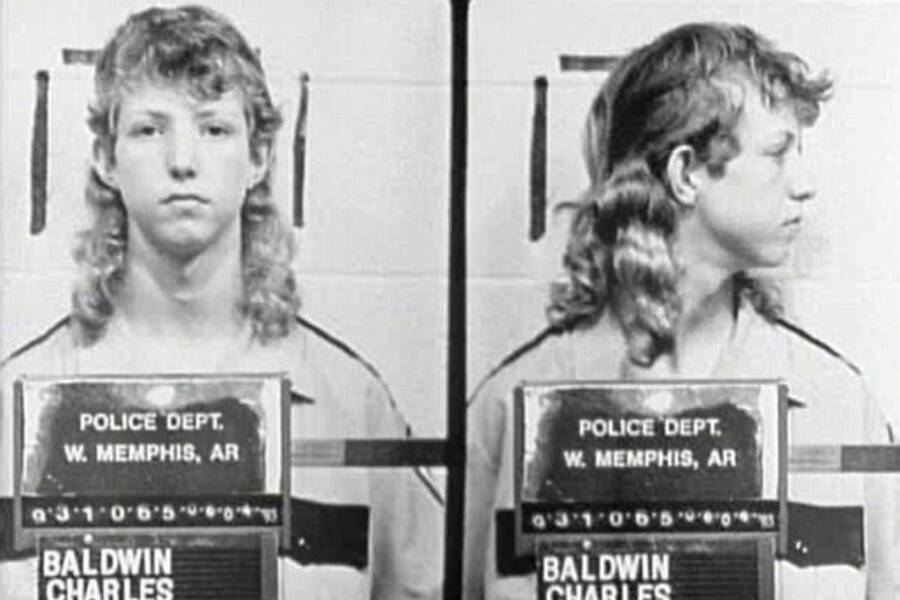
West Memphis Police DepartmentBooking photograph of Jason Baldwin.
Echols, who wore all black, listened to heavy metal, read books on Wicca, and seemed to practice some form of paganism, especially stood out. He also had a history of mental health issues, and some officers were quick to remark that he seemed like the type who would commit murder.
Baldwin was a good student, notably smart and seemingly with a bright future, but his friendship with Echols put a target on his back.
And Jessie Misskelley Jr., while not necessarily close friends with Baldwin and Echols, had similar interests and was at the very least acquainted with them. Misskelley also had an IQ of about 70 and a learning disability — and this would prove to be consequential during his police interview.
Controversies Surrounding The Investigation And Jessie Misskelley Jr.’s Confession
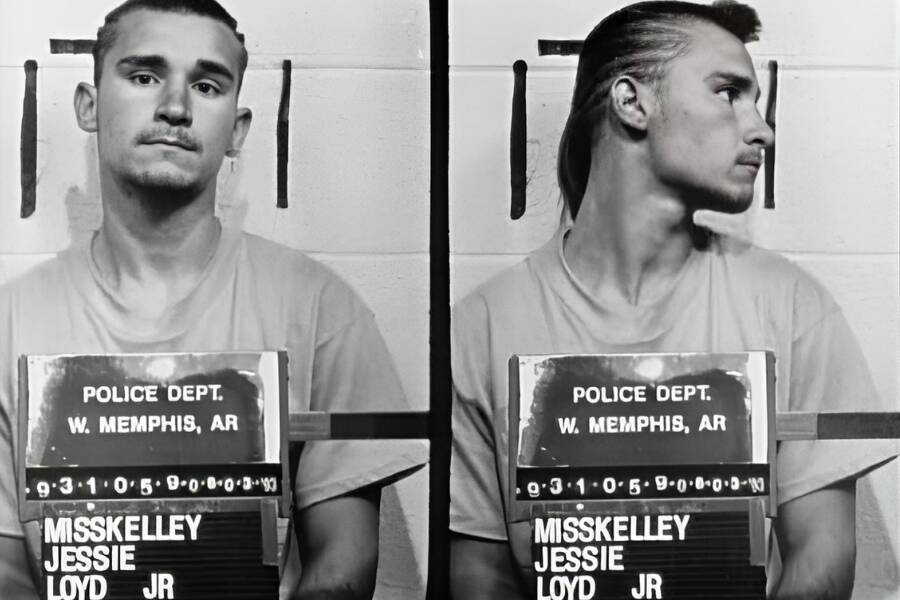
West Memphis Police DepartmentJessie Misskelley Jr.’s booking photo.
During the initial police investigation, the authorities made a number of controversial decisions, which led to the mishandling of evidence and the possible contamination of the crime scene. However, the most controversial element of the case was Jessie Misskelley Jr.’s interrogation on June 3, 1993, and the confession that happened as a result of it.
At the time, Misskelley was just 17 years old. Yet, during his interrogation — which lasted for a staggering 12 hours — he did not have his parents or a lawyer present. Given his intellectual disability, this could have made him especially vulnerable to coercive lines of questioning. And although the interview lasted for hours, only 46 minutes of it were actually recorded.
Still, in just those 46 minutes alone, it’s clear that Misskelley’s confession was rife with inconsistencies and inaccuracies. For example, Misskelley changes the time of the murders multiple times, at first claiming that they took place at 9 a.m., then noon, and then later at night. At one point, a detective noted that Misskelley did not wear a watch.
“So, your time period might not be exactly right, what you’re saying?” a detective asked Misskelley. “Right,” he replied.
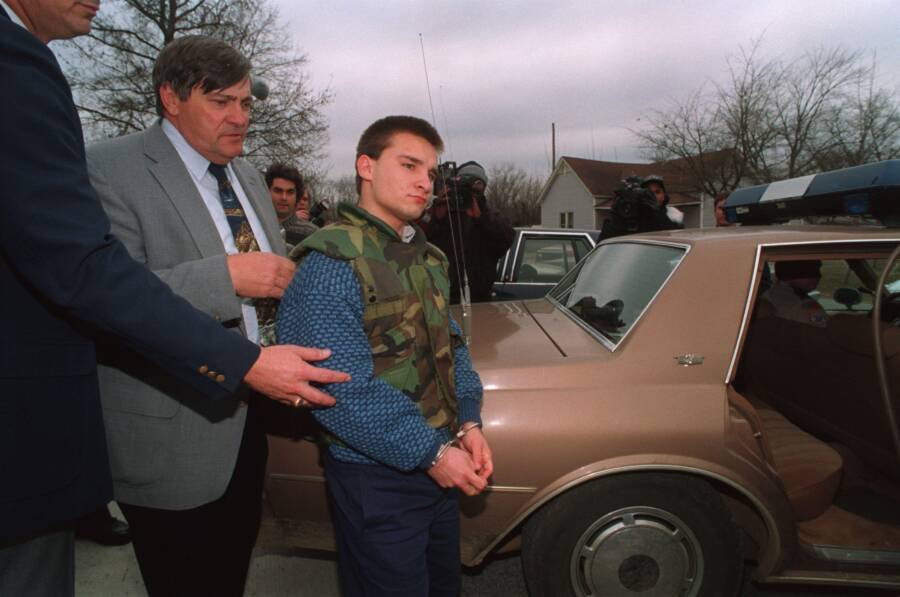
Zuma Press, Inc./Alamy Stock PhotoJessie Misskelley Jr. being led away by the police after his trial.
At one point during the interrogation, detectives suggested to Misskelley that he was in a cult. Misskelley then said he had been in it for three months, during which he and his fellow cult members went into the woods to kill dogs and participate in orgies. After this, the detectives returned the conversation to the day of the murders, this time saying, “Okay, the night you were in these woods… had you all been in the water?”
Despite the fact that Misskelley had previously said he was in the woods in the morning, and then later said he was there at around noon, he apparently accepted the new timeline presented to him without question. (It’s worth noting that the boys were last seen alive around 6:30 p.m.)
Additionally, Misskelley gave incorrect details about the way the boys were tied up and the nature of their injuries, indicating that his confession may not have been based on actual knowledge of the crime.
“The lawyers for the Three maintained that Misskelley’s confession was false, unreliable and included all sorts of statements totally inconsistent with how the crime happened,” University of Virginia law professor Brandon L. Garrett wrote in 2011 for the Harvard University Press. “The few recorded pieces of the interrogations showed police using leading questions to try to tell him what had happened, something that interrogators are trained not to do because it contaminates a confession. We do not know what threats or other techniques were used to secure that confession. Misskelley had promptly recanted his confession, but it was used to arrest and convict him.”
Misskelley’s confession was also used to implicate Baldwin and Echols and served as a pivotal piece of evidence in the case against the Three. In 1994, Misskelley was sentenced to life in prison without the possibility of parole. Baldwin was also sentenced to life without parole. And since Echols was widely believed to be the leader of the group, he was sentenced to death.
Still, little hard evidence linked the teenagers to the crime scene (other than some fibers that couldn’t be ruled out as belonging to other people), and in the years following the convictions, the public began to re-examine the case, casting scrutiny on the investigation and the trials.
The Contentious Aftermath Of The West Memphis Three’s Convictions
In 1996, the HBO documentary Paradise Lost: The Child Murders at Robin Hood Hills was released, bringing national attention to the case. The documentary highlighted the lack of evidence, the potential for wrongful convictions, and the influence of the Satanic Panic on the case.
Following this documentary, people across the nation began to advocate for the release of the West Memphis Three, including celebrities like Eddie Vedder, Johnny Depp, and Peter Jackson. The Innocence Project also took a notable interest in the case, working to help exonerate the Three.
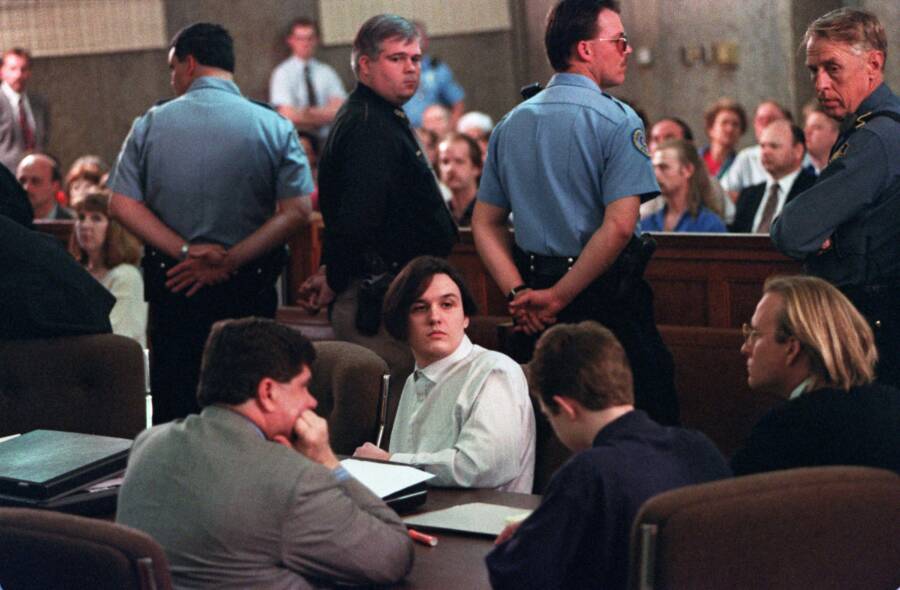
Zuma Press, Inc./Alamy Stock PhotoDamien Echols sitting as the judge reads the jury’s guilty verdict.
Then, in 2007, advancements in DNA testing offered new insight into the crime — and it didn’t point to the West Memphis Three. As CNN reported in 2009, new DNA testing of the crime scene revealed no genetic material linking Echols, Baldwin, or Misskelley to the murders. More shockingly, DNA evidence did actually link Terry Hobbs, Stevie Branch’s stepfather, to a ligature at the scene. In addition, a hair found on a tree stump near the crime scene was linked to David Jacoby, a friend of Hobbs.
(Hobbs and Jacoby have both firmly denied being involved in the murders, and neither of the men have ever been named as suspects by the police.)
Around the same time, three eyewitnesses who lived next to one of the victims filed affidavits with the Arkansas Supreme Court, in which they said they saw the three victims with Terry Hobbs on the night before the police found their bodies — contradicting Hobbs’ own statements to the authorities that he didn’t see his stepson on the day of the murder.
“[The authorities] never really did any investigation,” said Echols’ attorney, Dennis Riordan. “They never interviewed Hobbs. The fact that the witnesses saw him, and they realized for the first time, it was very significant.”
Following the new DNA testing, some members of the victims’ families began to doubt that the West Memphis Three were guilty — even family members who firmly believed they were responsible years earlier.
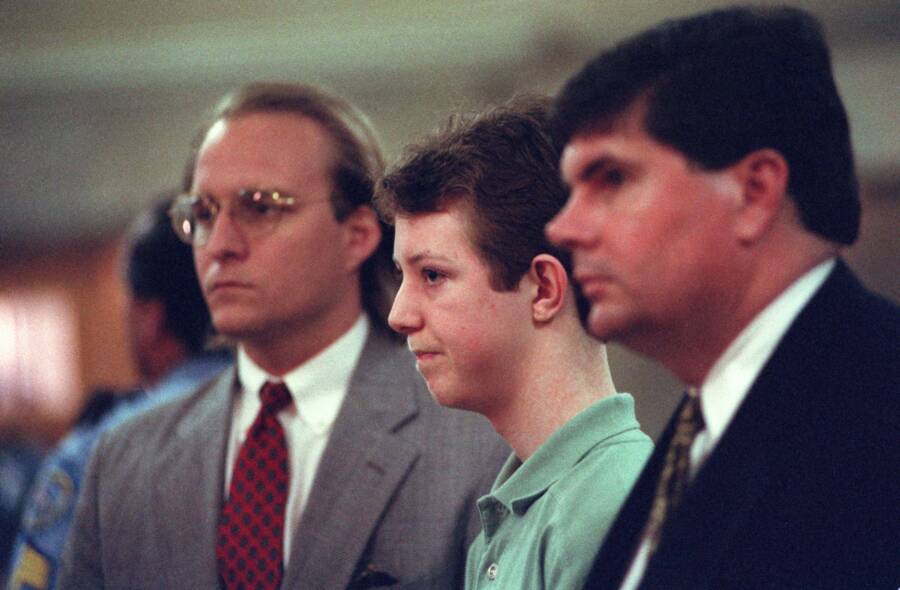
Zuma Press, Inc./Alamy Stock PhotoWhen asked why he should not be sentenced to life in prison, Jason Baldwin said, “Because I’m innocent.”
“The worst part about it is the three real victims that deserve justice, the three eight-year-old children, have not been given justice,” Mark Byers, the father of Christopher Byers, said. “They got a hack job for a police investigation. It was a rush to find someone who they said did this.”
But the new DNA evidence didn’t immediately grant the West Memphis Three their freedom. Instead, that moment came later in 2011.
The Alford Pleas That Changed The Lives Of The West Memphis Three
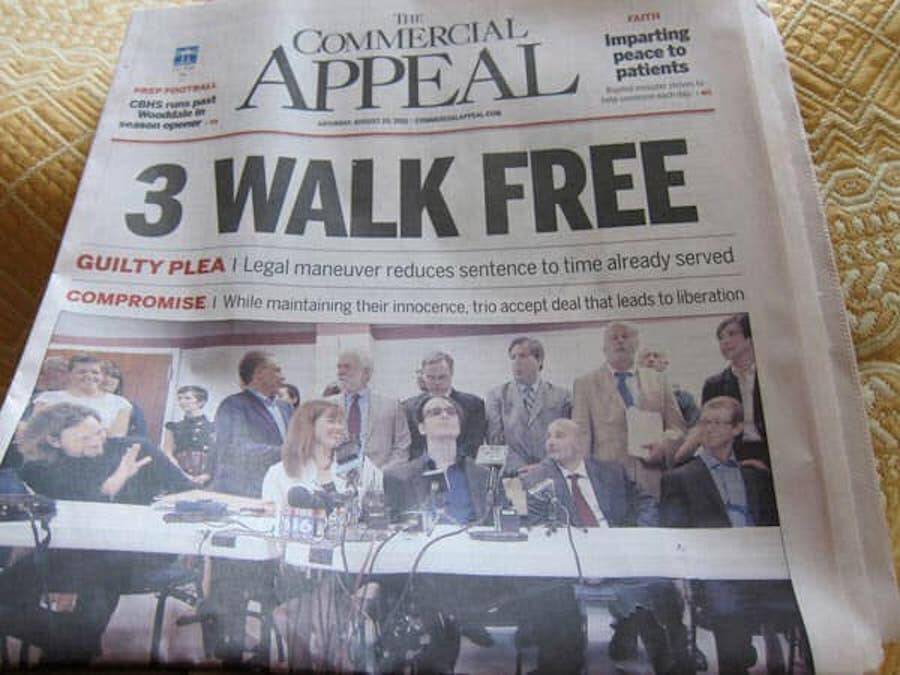
FacebookA newspaper announcing the release of the West Memphis Three in 2011.
After years of legal battles and public pressure, prosecutors and defense teams for the Three entered negotiations. The end result was a rare legal deal that would not fully exonerate the Three, but would allow for them to be released from prison while they maintained their innocence. This is called an Alford plea, and it lets a defendant assert their innocence while acknowledging that the prosecution had enough evidence to convict them.
So, in 2011, Damien Echols, Jason Baldwin, and Jessie Misskelley Jr. entered Alford pleas. Each were sentenced to time served and released from prison. While they weren’t technically exonerated, from a legal standpoint, the plea deals did mark the first taste of freedom that the Three had in nearly two decades. And for Echols, it saved him from a death sentence.
“The evidence against us was our personal preferences in music,” Baldwin said in a 2011 interview. “I remember at one point during the trial, they lifted up a record, a Blue Oyster Cult record, and I think [prosecutor] John Fogleman said this was found in Damien’s girlfriend’s mother’s house.”
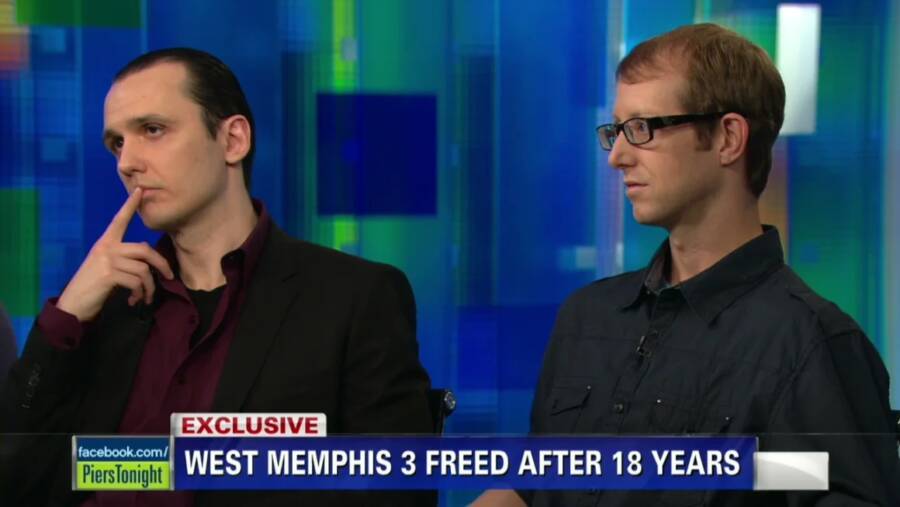
CNNDamien Echols (left) and Jason Baldwin after their release.
Since then, each member of the West Memphis Three has done their best to adapt to the new, modern world they emerged into — knowing that while some believe they were always innocent, others still believe they were guilty.
Echols moved to New York City and then later to Salem, Massachusetts, though he would later return to New York (possibly due in part to Mike Blatty, the son of the man who wrote The Exorcist, who was vocal about his belief in Echols’ guilt and bragged about “running him out of town”). Echols also published a memoir titled Life After Death. Baldwin co-founded the organization Proclaim Justice in Austin, Texas, which aims to help those who have been wrongfully convicted. As for Misskelley, he returned to West Memphis and has largely stayed out of the public eye.
To this day, the Three are still seeking full exoneration with the help of legal teams and advocates. And one question, of course, still remains: Who really killed Stevie Branch, Christopher Byers, and Michael Moore?
After learning about the West Memphis Three, take a look at the story of David Camm, the man wrongfully convicted of killing his wife and children. Then, read about Donald Marshall Jr., the Indigenous Canadian man who spent 11 years in prison for a murder he didn’t commit.






